Key takeaways
- Creativity in education involves nurturing original thinking and problem-solving skills beyond traditional subjects like art and music.
- Sir Ken Robinson emphasizes that everyone is inherently creative, and education should promote diverse learning styles and view mistakes as opportunities.
- Creating a safe environment for risk-taking and encouraging exploration can significantly enhance student creativity.
- Integrating creative activities in lessons, such as brainstorming and role-plays, fosters deeper engagement and understanding of complex concepts.
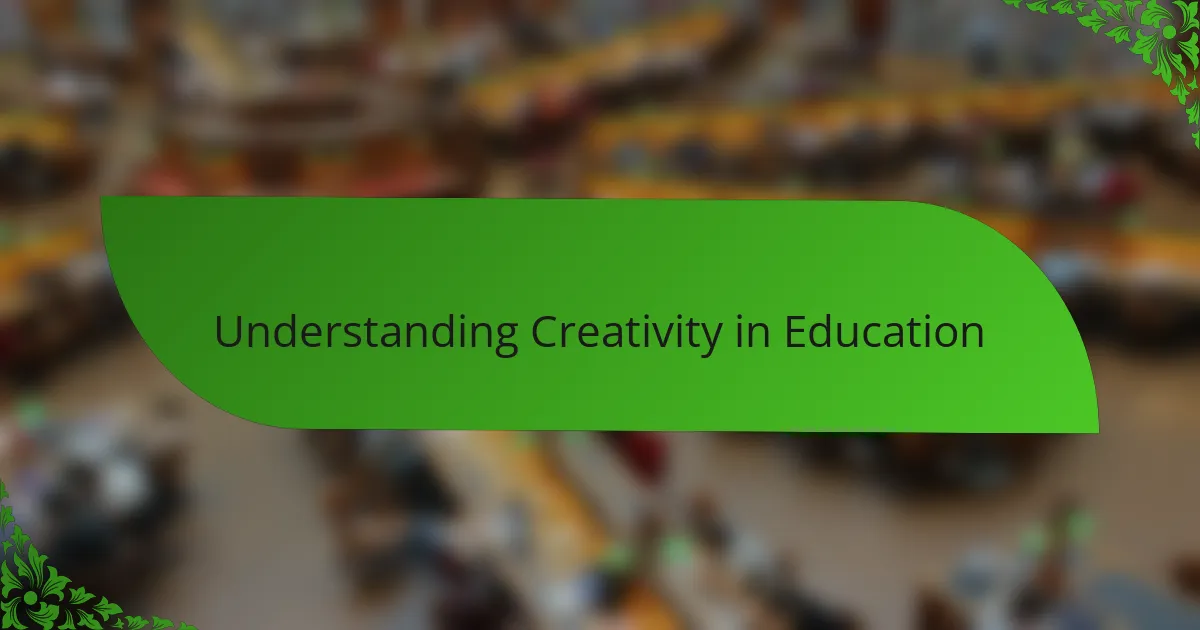
Understanding Creativity in Education
Creativity in education isn’t just about art or music; it’s about nurturing original thinking and problem-solving skills. I remember struggling to see creativity beyond painting or writing until a teacher encouraged me to approach math problems with curiosity rather than fear. Have you ever noticed how unlocking creativity can transform a dull lesson into an exciting challenge?
What strikes me most is how education systems often prioritize standard answers, leaving little room for creative exploration. When I reflect on my own schooling, I realize that the moments I felt most engaged were those when I could experiment, make mistakes, and discover new ideas on my own. Isn’t it ironic that creativity—the driving force of innovation—is often sidelined where learning begins?
Understanding creativity means recognizing it as a vital mindset rather than a fixed talent. It’s about cultivating an environment where questions are valued over quick answers and where students feel safe to express their unique perspectives. From my experience, education that embraces this mindset fosters not just knowledge, but confidence and a lifelong passion for learning.
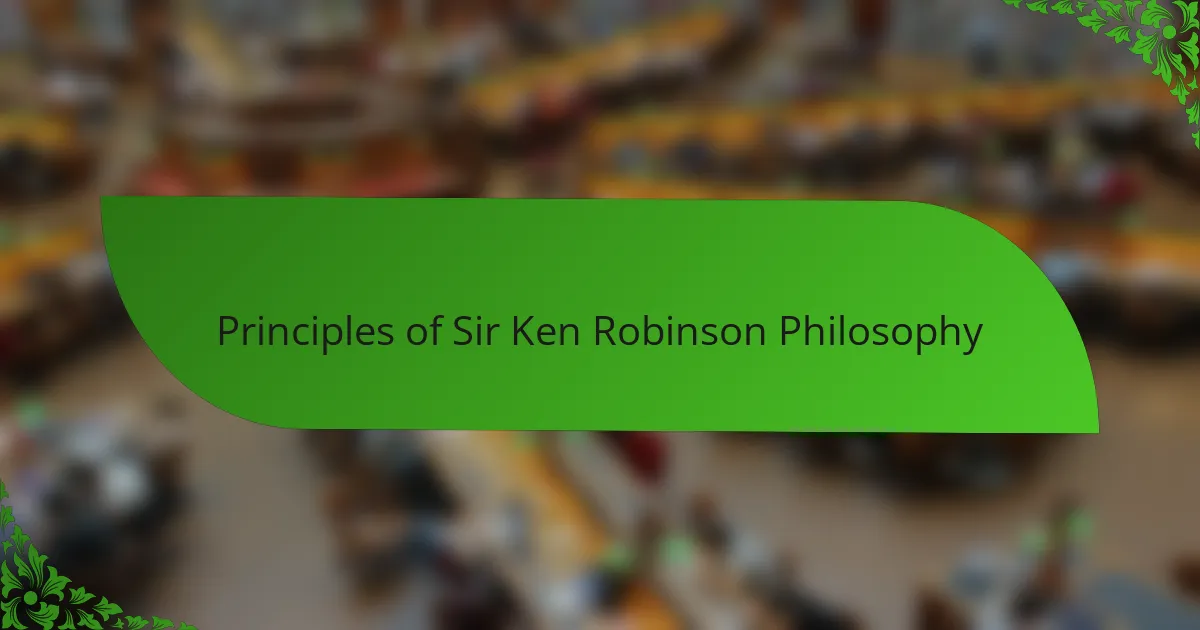
Principles of Sir Ken Robinson Philosophy
Sir Ken Robinson’s philosophy rests on the belief that everyone is inherently creative, but traditional education too often stifles this natural ability. I’ve seen firsthand how when we give people permission to think differently, they begin to unleash ideas they never thought possible. Isn’t it remarkable how a little encouragement can awaken a latent spark inside?
Another principle that resonates deeply with me is Robinson’s emphasis on diversity in intelligence and learning styles. Reflecting on my own journey, I think about how many times I felt boxed in by standard teaching methods that didn’t align with how I best understood the world. Have you noticed how recognizing different kinds of intelligence can open up new pathways for creativity and growth?
Robinson also champions the idea that mistakes are not failures but essential steps in the creative process. I remember a time when a project I thought was a disaster turned out to be the most valuable learning experience because it pushed me to rethink and invent. Doesn’t it feel powerful to shift your perspective on failure from fear to opportunity?
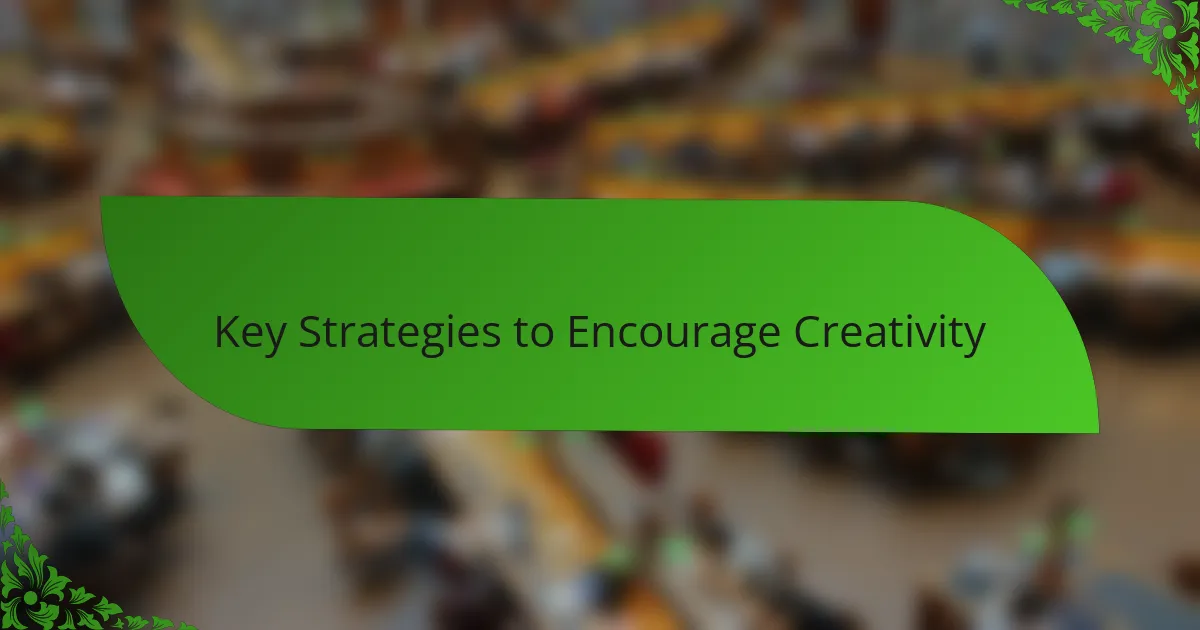
Key Strategies to Encourage Creativity
One of the most effective strategies I’ve found to encourage creativity is to create a safe space where taking risks is welcomed, not punished. I recall a moment when, as a student, feeling free to propose an unconventional idea sparked a chain reaction of innovation in the classroom. Have you ever experienced how just knowing you won’t be judged harshly can unleash a torrent of imaginative thinking?
Another key approach is to embrace diverse thinking styles and challenge rigid rules. When I experimented with different methods to solve a single problem, it felt like unlocking several doors at once, each leading to fresh possibilities. Why limit creativity by confining learners to one “right” way when exploration can reveal so much more?
Finally, I encourage viewing mistakes not as setbacks but as vital steps forward. There was a time when a failed experiment felt crushing, but reflecting on it later, I recognized it as a turning point that deepened my understanding and broadened my creative horizons. Doesn’t reframing failure this way make the creative journey much more exciting and less intimidating?
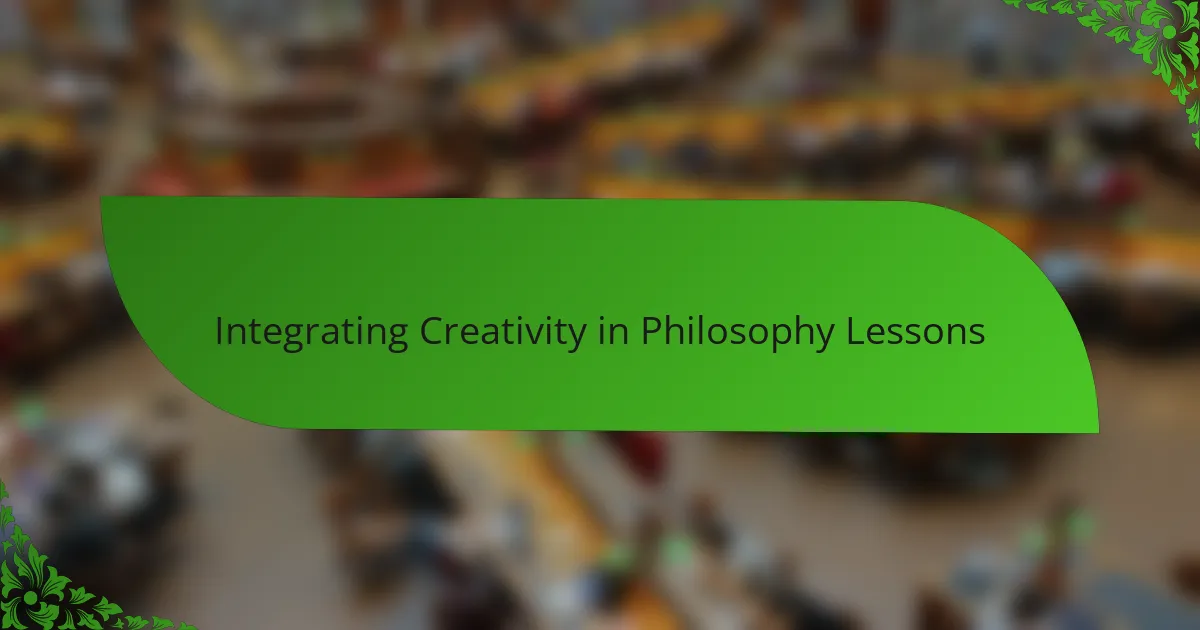
Integrating Creativity in Philosophy Lessons
Integrating creativity into philosophy lessons transforms abstract concepts into living questions that invite exploration. I remember guiding a group of students to write alternative endings to classic philosophical dilemmas, which sparked lively debates and fresh perspectives. Isn’t it amazing how giving room for imagination can make even the most complex ideas feel accessible?
Philosophy, at its core, thrives on challenging assumptions and thinking differently, so blending creativity feels natural—almost essential. When students feel encouraged to approach a famous argument through storytelling or art, they engage more deeply and retain insights longer. Have you noticed how these creative exercises breathe new life into traditional texts?
From my experience, the biggest hurdle is shifting from a teacher-led lecture to a facilitator of discovery. I once hesitated to step back, fearing a loss of control, but allowing students to take creative ownership turned the lessons into dynamic conversations. Isn’t that what philosophy—and creativity—is all about, after all?
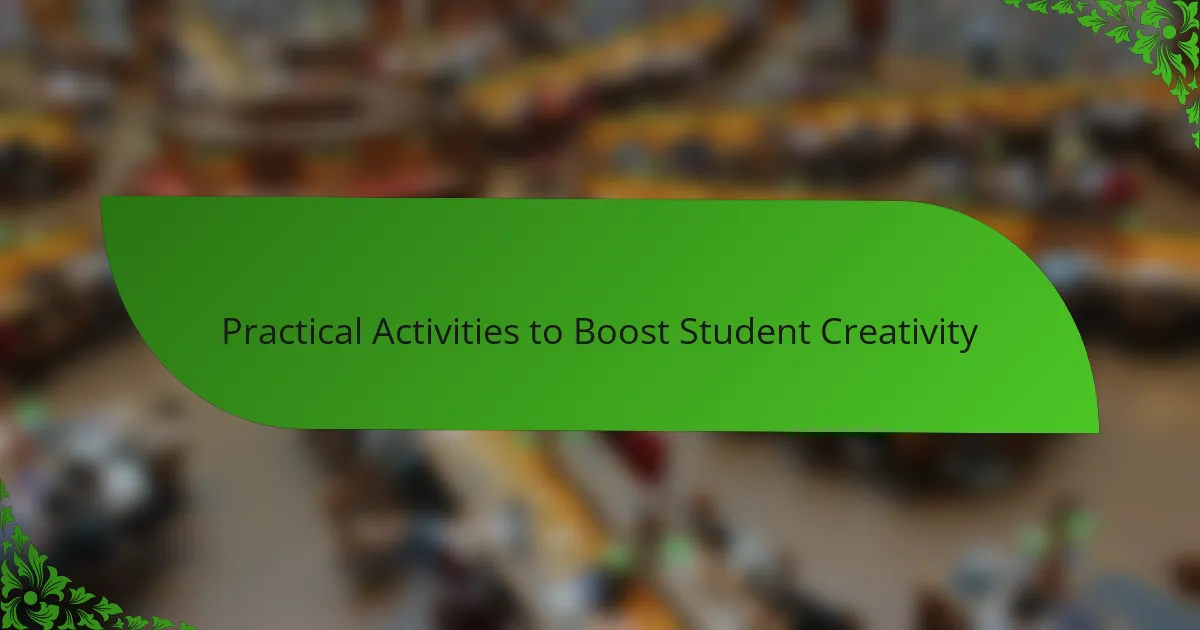
Practical Activities to Boost Student Creativity
When I encourage creativity in the classroom, I often start with quick brainstorming sessions where no idea is too wild or off-limits. I’ve seen how this openness ignites excitement and lets students push beyond their usual boundaries. Have you noticed how simply saying “there are no wrong answers” can instantly change the energy in a room?
Another activity I find powerful is asking students to create metaphors or analogies for abstract philosophical concepts. Once, a student compared the idea of justice to a balancing scale made of leaves—delicate yet essential. That moment made me realize how personal interpretation not only deepens understanding but also invites unique creative expression.
I also like incorporating playful role-plays where students embody different philosophers or ethical dilemmas. Watching them step into another mindset brings ideas to life in ways textbooks never could. Doesn’t it feel rewarding to see students discover creativity through acting, conversation, and collaboration rather than just writing?
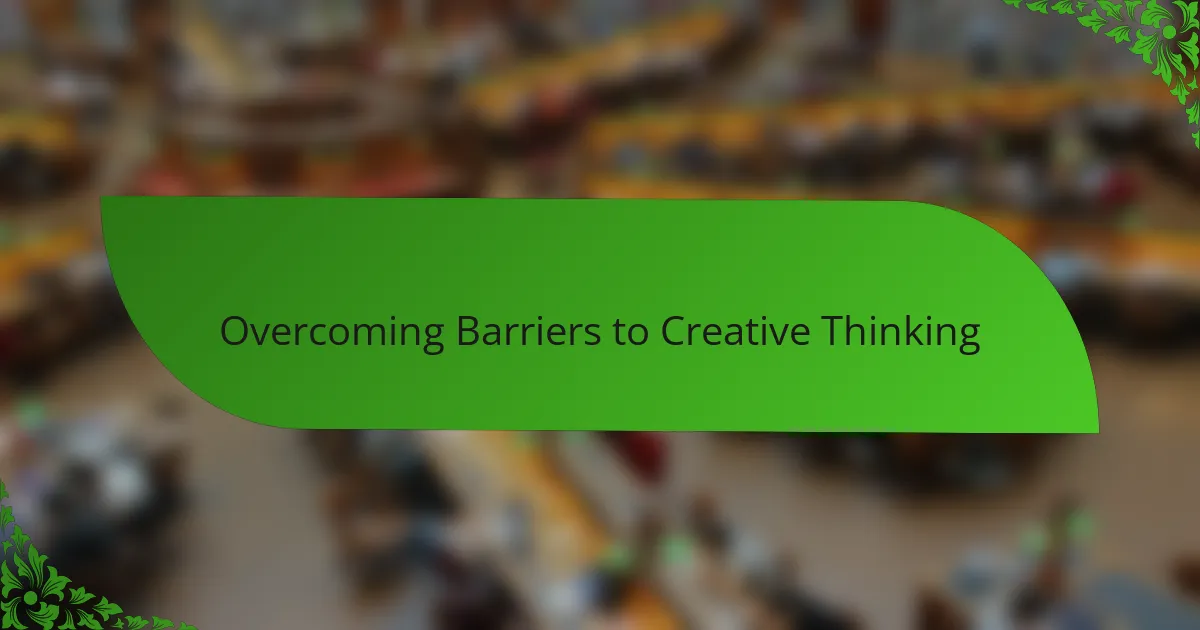
Overcoming Barriers to Creative Thinking
Barriers to creative thinking often stem from fear—fear of judgment, failure, or simply stepping outside the norm. I remember hesitating to share an unusual idea because I worried it would sound silly, until a mentor encouraged me to embrace that vulnerability. Have you ever noticed how releasing that fear instantly opens up space for new possibilities?
Rigid structures in education can also block creativity by promoting “one right answer” thinking. When I challenged these constraints by approaching problems from different angles, I felt a liberating shift, as if a window had opened to fresh air. Why stick to predictable paths when exploration can lead to unexpected insights?
Sometimes, the biggest barrier is our own mindset. I used to view mistakes as setbacks, but shifting to see them as experiments transformed my creative journey. Doesn’t it feel empowering to reframe obstacles as stepping stones rather than roadblocks?
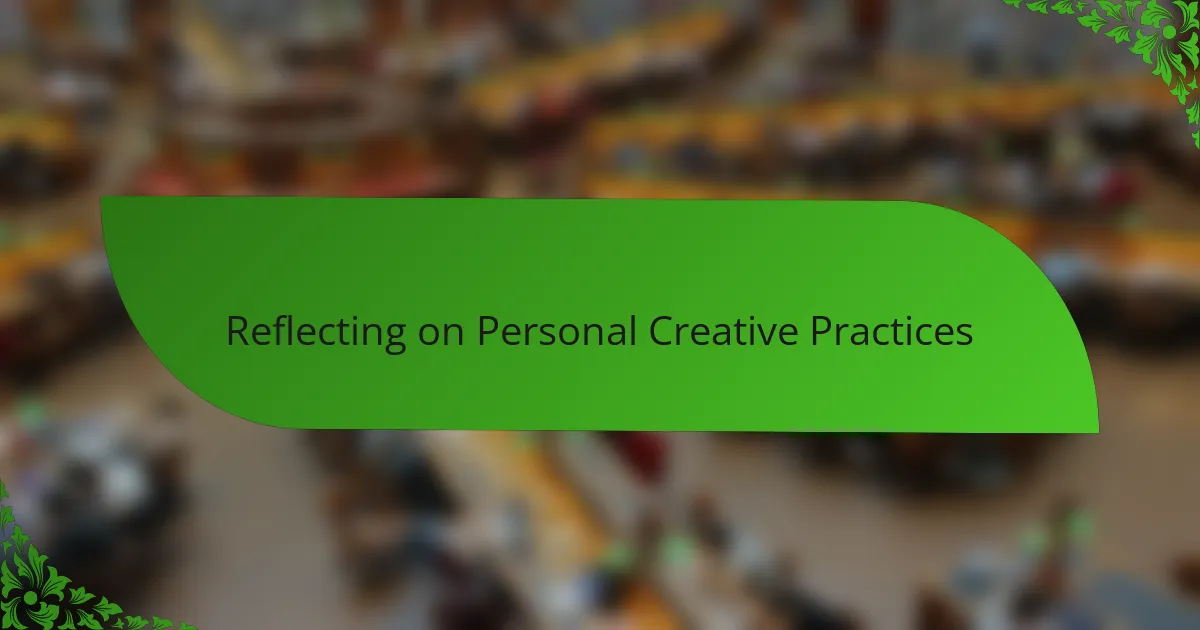
Reflecting on Personal Creative Practices
Reflecting on my own creative habits, I’ve noticed how important it is to carve out quiet moments for ideas to simmer. There were times when I pushed too hard for instant results, only to find my best insights came unexpectedly during a walk or a break. Have you ever experienced that sudden spark when you least expect it?
I also find that journaling my thoughts helps me track patterns in my creativity—what inspires me, what drains me, and where I tend to self-censor. At first, I felt awkward admitting ideas that seemed odd or unfinished, but over time, this practice became a safe space for honest exploration. Isn’t it fascinating how just allowing yourself to be messy can unlock deeper originality?
Sometimes, the most revealing reflection comes from sharing creative attempts with others and hearing their reactions. I remember nervously presenting a concept that felt vulnerable, only to discover a richness in dialogue that pushed my thinking further. Doesn’t collaboration often transform personal creativity into something richer and more unexpected?